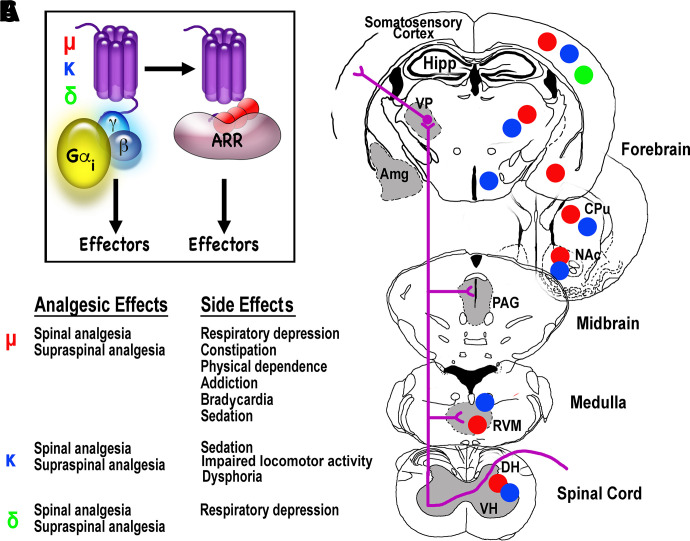Fig. 2.
Opioid receptor subtypes: signal transduction, agonist effects, and localization. (A) The three opioid receptor subtypes (μ, κ, and δ) are G protein-coupled receptors that primarily couple to the Gi/o subfamily of G proteins. The ligand-activated receptors are phosphorylated by G protein-coupled receptor kinases, resulting in the recruitment of β-arrestins (ARR), followed by receptor desensitization and/or internalization, and, most likely, β-arrestin-dependent modulation of intracellular signaling. (B) The analgesic effects of μ, κ, and δ opioid receptor agonists are usually accompanied by a series of side effects. The potential involvement of β-arrestin-dependent signaling in mediating these side effects is currently a hotly debated issue (Gurevich and Gurevich, 2020). (C) A simplified diagram of the ascending pain pathway (for details see De Ridder et al., 2021; Wang et al., 2022a) showing the brain regions with the highest expression levels of the three opioid receptor subtypes (red circles, μ; blue, κ; green, δ). Although the striatum (CPu and NAc) is technically not part of the pain pathway, this brain region expresses high levels of μ and κ receptors. Amg, amygdala; CPu, caudate-putamen; DH, dorsal horn of the spinal cord; Hipp, hippocampus; NAc, nucleus accumbens; PAG, periaqueductal gray; RVM, rostroventral medulla; VH, ventral horn of the spinal cord; VP, ventral posterior nucleus of the thalamus.

